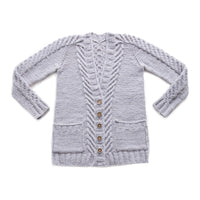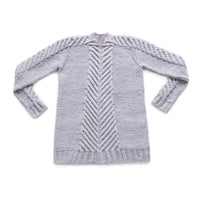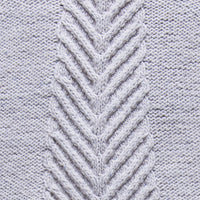Product description
“When it comes to cables, there’s one that I always revisit: the antler cable. There’s something about it that’s simultaneously timeless and modern, graphic and organic. I wanted to experiment with dividing these cables to edge a fabric and changing their direction to take a classic cardigan somewhere a little unexpected.” – Bristol Ivy
Clever seamless construction and bold cables elevate this chunky deep-V cardigan. Marylebone is worked all in one piece, with Bristol’s flair for inventive details evident at every turn. A-line shaping is hidden within the antler cable along the spine, which splits at the neck and unites with the half cables from the front to flow out along the saddle shoulders and down to the cuff. Sleeve stitches are picked up around the armscye and knit flat, with short rows shaping the caps. A ground of reverse stockinette throws the cables into high relief and patch pockets adorn the fronts for functional style. They’re worked separately and sewn on, so you can knit one as a swatch and decide at the end whether to attach it and make it a partner or leave your fronts sleek and simple. Knit in Quarry, Marylebone will fly off the needles.
Designer: Bristol Ivy
Collection: Wool People, Volume 10
Share
Marylebone
Staghorn Cable Cardigan








